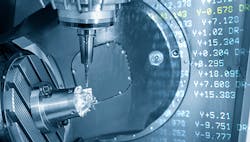Smart components yield more production data
More user-friendly and customized software and open platforms have opened the door for deeper data analysis. Manufacturers can use this data and predictive analytics to monitor the health of their machines, maintaining equipment properly and enhancing production.
“Since on-machine components are located where production events occur, such as conveyor movement, cutting, filling, stamping, wrapping and stacking, they can more easily detect changes in the environment that could indicate a potential problem in the future,” says Brian Taylor, business director of safety, sensing and connectivity at Rockwell Automation. “We are seeing an increase in adoption of on-machine components and connected input devices, in part because we can add more intelligence at a lower price point, and that intelligence helps increase a manufacturer’s return on investment.”
Also read: Automation industry embraces on-machine components
On-machine components can produce a lot more data, analytics and machine learning at the device level, Taylor says. Some of the best results for motor analysis are found by using vibration, sound, temperature, motor current and motor voltage.
“The motor current and voltage come from the motor control and motor temperature, while sound and vibration come out from a sensor on the motor. An edge device with artificial intelligence (AI) could use data from both devices to provide a better result,” Taylor explains.
In addition to improving data analysis, the increased use of AI in on-machine components can also reduce the network bandwidth requirements for industrial automation applications. “All the raw data from the sensors is captured by the AI engine in the on-machine device and only the predictive result is sent back. Data that indicates the device or machine is running normally is not sent to the edge or cloud, which would have taken up additional network bandwidth,” Taylor says. He also noted that AI engines can only perform analysis on what they see, so when manufacturers have multiple data points, some analysis must also happen upstream.
The key initiative to unlocking data’s power is tighter integration of operational technology (OT) with information technology (IT), says Andrew Barco, director of automation products and solutions at Weidmüller. “Diagnostics can be built into the sensors themselves, to cut down on the number of sensors used on the machine,” he says. “By using smart components, the goal is that the machine will tell the user when it needs to be serviced to be in optimal production range.” The data gathered from on-machine devices can be used in advanced AI models to build better predictive models. “Typically, this type of data was not available in single function or dedicated sensors, and AI models needed many more datapoints in order to come up with a similar model that the smart sensors would provide,” Barco says.
Old machines, new life
Predictive-maintenance products can also be easily retrofitted to existing machines to add new capability, says Matt Mohr, product manager at Omron Automation Americas. “Predictive maintenance can display the current status of a power supply, remotely monitor insulation resistance of motors and servos to determine how they’re performing and predict when a motor will need to be replaced before it fails,” he says. “Predictive maintenance can also add the ability to monitor thermal conditions of equipment or provide the health status of heaters and notify of a potential failure before it happens.”
Components that add new and intelligent functionality are best for on-machine capability, Mohr says. “These components help customers move from a reactive or time-based maintenance schedule to a predictive maintenance strategy,” he says. “Data-driven maintenance practices will reduce downtime and keep machines operating smoothly. This gives maintenance the ability to identify patterns in the information and react preemptively before critical equipment failure.”
One of Omron’s customers, an automotive manufacturer, adopted its predictive maintenance technologies for on-machine use, specifically an insulation resistance monitor for single-phase, three-phase and servo motors with RS-485 communication output, says Mohr. The customer was experiencing multiple motor failures in its machine center, loading bay crane transport system and plastic injection molding machines. Production was substantially impacted when the motors and heaters on these respective machines were failing from insulation deterioration.
The solution was to implement remotely monitored insulation resistance monitors on the machines to monitor insulation resistance of the motors. The customer was able to change the manual motor inspection process, implementing automatic measurements to determine planned maintenance frequency, as well as reallocating resources to other tasks, Mohr says.
“This avoided unplanned downtime and removed a significant portion of manual labor, showing how much of a difference predictive-maintenance products can make in an on-machine environment.,” Mohr says.


